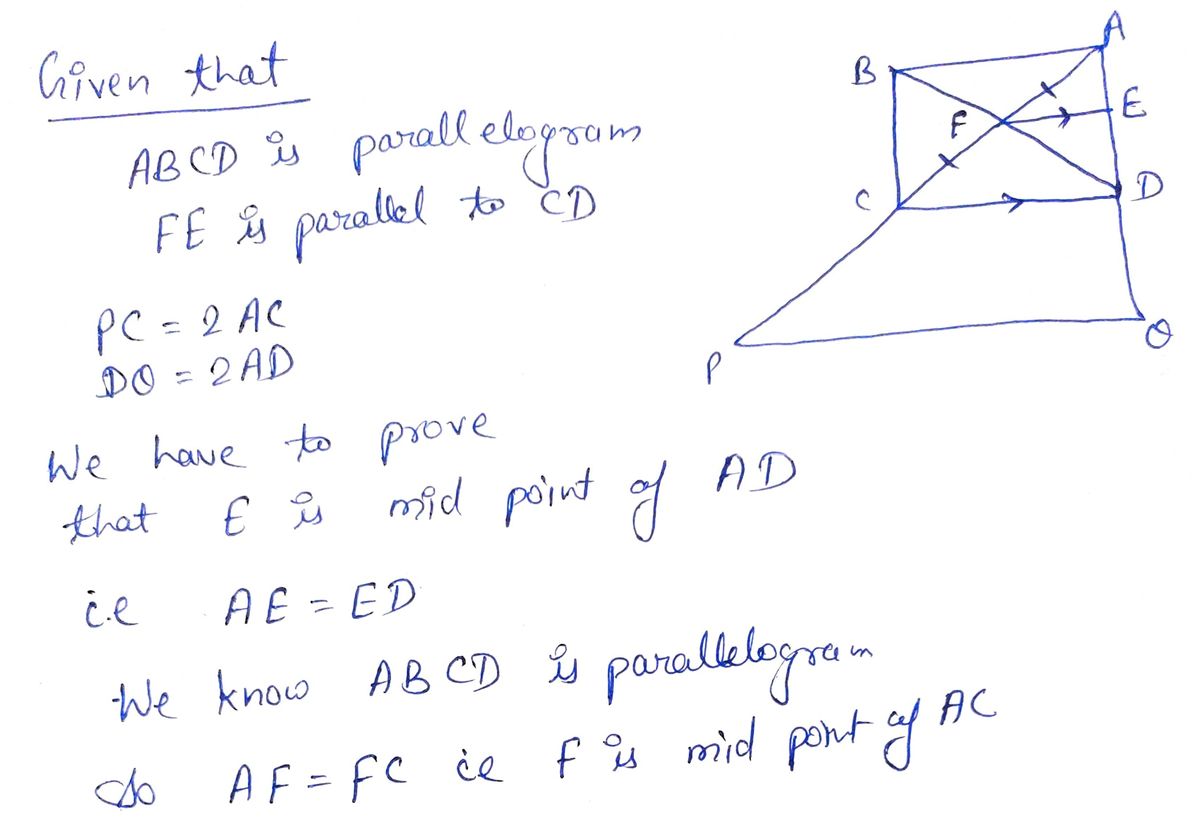diagonals intersecting at F. FE is parallel to CD. AC is extended to P so that PC = 2AC and AD is extended to Q so that DQ = 2AD. Prove that E is the midpoint of AD without using the midpoint theorem.
diagonals intersecting at F. FE is parallel to CD. AC is extended to P so that PC = 2AC and AD is extended to Q so that DQ = 2AD. Prove that E is the midpoint of AD without using the midpoint theorem.
Elementary Geometry For College Students, 7e
7th Edition
ISBN:9781337614085
Author:Alexander, Daniel C.; Koeberlein, Geralyn M.
Publisher:Alexander, Daniel C.; Koeberlein, Geralyn M.
ChapterP: Preliminary Concepts
SectionP.CT: Test
Problem 1CT
Related questions
Question
ABCD is a parallelogram with diagonals intersecting at F. FE is parallel to CD. AC is extended to P so that PC = 2AC and AD is extended to Q so that DQ = 2AD.
Prove that E is the midpoint of AD without using the midpoint theorem.

Transcribed Image Text:|||
Course: WSKA121
=
Assesseringsopdrag memo
Assesseringsopdrag memo
← → C ✰ eklas.aros.ac.za/pluginfile.php/82100/mod_resource/content/1/Assesseringsopdrag%20PDF.pdf
24°C
Sunny
P
X
T
Google Vertaal
Q Search
6 / 6
с
X
B
149% +
F
b Home | bartleby
X +
A
E
D
Q
OI
OneDrive
Q✩
^
Update:
***
Screenshot saved
The screenshot was added to your
OneDrive.
X
X
10:39
2023/10/06
⠀
25
Expert Solution
Step 1: Given that

Step by step
Solved in 3 steps with 2 images

Recommended textbooks for you

Elementary Geometry For College Students, 7e
Geometry
ISBN:
9781337614085
Author:
Alexander, Daniel C.; Koeberlein, Geralyn M.
Publisher:
Cengage,

Elementary Geometry for College Students
Geometry
ISBN:
9781285195698
Author:
Daniel C. Alexander, Geralyn M. Koeberlein
Publisher:
Cengage Learning

Elementary Geometry For College Students, 7e
Geometry
ISBN:
9781337614085
Author:
Alexander, Daniel C.; Koeberlein, Geralyn M.
Publisher:
Cengage,

Elementary Geometry for College Students
Geometry
ISBN:
9781285195698
Author:
Daniel C. Alexander, Geralyn M. Koeberlein
Publisher:
Cengage Learning